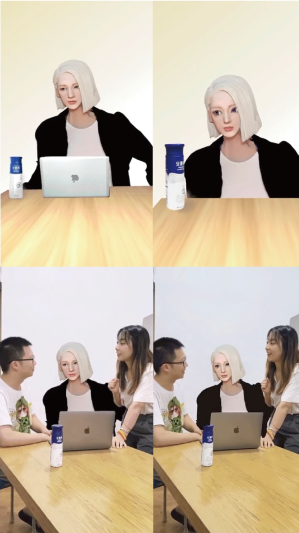Introduction
Recently, we have witnessed many virtual influencers appear on social media and post many interaction videos with real people, which brings us a feeling that virtual influencers have stepped into our lives. What kind of virtual influencer‘s appearance and interaction will enhance the audience’s acceptance, and even motivate people’s attitude change? we adopted the context of advertisement to address this interesting problem.
Virtual Influencer:
We classify the virtual idol into 2 dimensions: appearance styles and interaction ways. For appearance styles, we define them as cartoonish style and hyperreality style. For Interaction ways, we separate them into one-way interaction (only virtual idol) and two-way interaction (virtual idol interacts with real people). To further strengthen the stimulus, we made four videos.
Materials:
I adopted the Camera 4D software to establish the 4 videos.

What we find:
- The relationships built between humans and VIs do not depend as much upon visual appearances as on the integration with the real world.
- Integrating the VI’s presence in the physical world with real people was shown to increase feelings of social and spatial presence, leading to AI “belief,” improved parasocial interactions, increased intentions to support, and improved behavioral intentions for future engagement.
- The eeriness and UV experiences of virtual influencers were found to be not associated with hyper-realistic appearances but with the nature of the VI’s integration with the physical world.

No responses yet